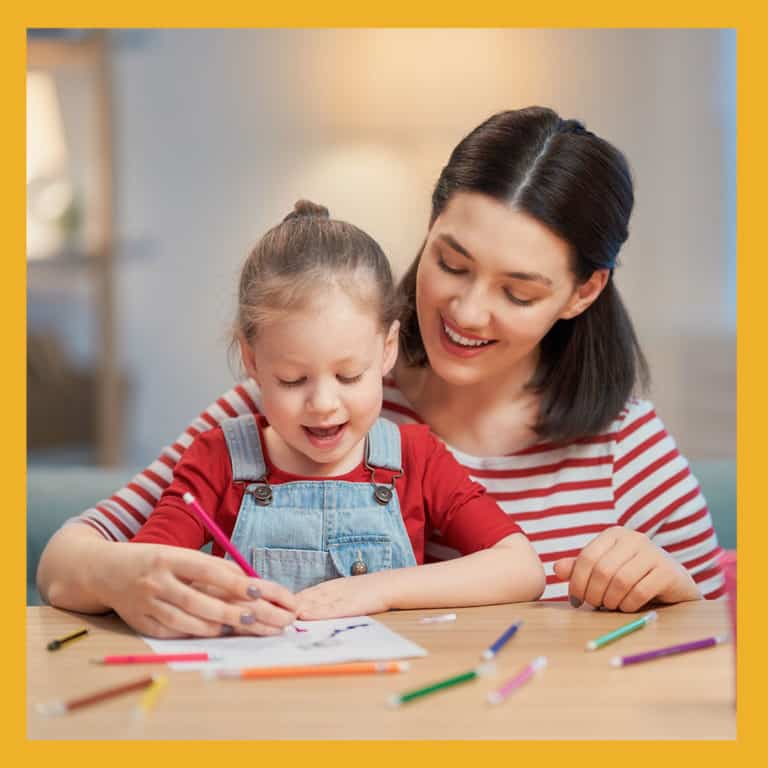Occupational therapy focuses on skills your child uses each day to take care of themselves. For example, brushing your teeth, putting on your own clothes, and holding a pencil are all occupational skills. Occupational skills often involve fine motor movements, like the ability to manipulate buttons or zippers. These skills can be particularly challenging for children with ADHD, sensory issues, or developmental delays.
Play is also an occupational skill and there are many ways to develop your child’s fine motor skills at home. The first step is to consult with a pediatric occupational therapist to find out their suggestions for activities, reward systems, and rubrics by which you can measure progress. Your child may have particular skills they need help with, and your OT can recommend games and activities that will help to target those skills.
Beyond those specific recommendations, here are some guidelines to keep in mind when incorporating OT into your child’s daily routines:
1. Practice Opportunities Are Everywhere
Opportunities to practice self-care skills are around every corner.
If you’re like most parents, you probably have a tendency to do things for your child that they aren’t able to do just yet – or that they aren’t able to do well. While this certainly isn’t a bad thing, it’s important to remember to let your child try to button their own jacket or put on their own shoes whenever possible. If there’s something your child wants to try and you have the time, stepping aside and allowing them to take the lead is sometimes the hardest task a parent can undertake, but it’s an important step.
Under the current circumstances, it’s likely that your children will be at home with you around the clock over the next few weeks. Try to set some time aside each day to allow your child to take the lead on tasks that you’d normally help them with, and instead, allow them to show you what they’re capable of.
2. Play is Therapy
When you’re picking out new toys for your child, look for toys that are both a lot of fun and that will help them practice their fine motor skills. For example, depending on your child’s age, you could get
- stuffed animals or sensory objects with zippers, buttons, and snaps
- board games with pieces to be moved, dice to be rolled, or a spinner to spin
- stacking blocks or Legos
- a plastic tea set
All of these toys help children practice self-care skills while having fun.
3. Art is Therapy
Art projects are a great way to build fine motor skills while having fun and soothing the senses. Molding with kinetic sand, practicing cutting with age-appropriate scissors, and sticking things together with Elmer’s glue can all be rewarding and calming activities.
4. Rewards and Limits
For many kids, having a rewards chart for when they accomplish small goals is a great way to encourage more practice. It’s amazing how hard children will work for a cool sticker! And don’t forget to let them peel and place the sticker themselves!
That said, when incorporating OT into your child’s daily routine, it’s also important not to push too hard. For example, if you were to say that your child can’t have breakfast until she dresses herself, there’s very little chance that the ultimatum is going to end well. Look for opportunities to make practice fun as much as possible, and try not to demand too much of your child as they learn and grow at their own pace.






I always encourage my parents to incorporate play therapy at home to help boost their child’s gross and fine motor skills. People would be surprised at how something simple such as opening a milk cartoon at school is hard for most children.